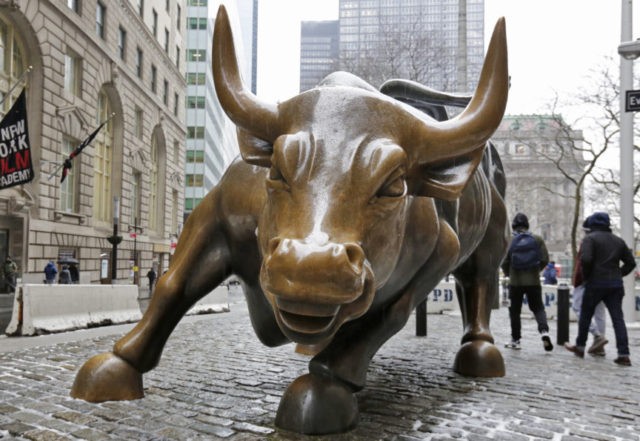It was an elitist day in the stock market.
The broader indexes sold off, while the famous Dow Jones Industrial Average rose by 115.5 points, or nearly half a percentage point. The S&P 500 was down a bit, 2.25 points or 0.08 percent. The Nasdaq Composite slipped 0.2 percent. The Russell 2000, which is composed of stocks of smaller companies, fell by almost exactly as much as the Dow rose.
The stock market’s affair with Donald Trump continues unabated. When Trump looks strong, the market tends to go up. When he looks weak, the market tends to go down. Today, stocks fell notably after reports that special counsel Robert Mueller has sent subpoenas to the Trump Organization.
For context, the S&P 500 is now about halfway between its January record high and its early February lows. If you just got back from a three-month ski vacation starting in mid-January, don’t try to get caught up. Just assume nothing happened and the market is right where it was when you hit the slopes.
People are worried about the yield curve.
The yield curve is finance-speak for the difference between long-term and short term Treasury yields. Yields move in the opposite direction of bond prices. So when long term yields rise, it means the price of a long term bond is falling, often an indicator that investors think long-term bonds issued in the future will pay a higher rate of interest so they discount the paying bonds issued earlier.
When the yield curve steepens, meaning long term yields rise relative to short term yields, it is typically an indicator that investors think interest rates will rise in the future. When the yield curve flattens or inverts, meaning short term yields are higher than long-term, it’s usually an indicator that interest rates are expected to fall in the future.
Since the Federal Reserve sets overnight rates for banks, and all the longer Treasury rates are more or less built off of where people think the Fed will set rates, a flattening yield curve indicates that rates expectations are declining. The Fed says it sets interest rates based on the strength of the economy, raising them when inflation threatens to get too hot and lowering them when the economy seems sluggish.
What all this means is that a flattening yield curve is a prediction of a “dovish” monetary policy, meaning lower rates and a more sluggish economy that would push the Fed in that direction.
And lately the yield curve, which was looking for a bit like we were verging on an economic acceleration, has been flattening. Short terms rates are still rising, term rates are falling. That doesn’t mean that the economy will not grow in the future, but it means that people who trade bonds are skeptical about the potential for growth.
Ireland Wants to Avoid a Whiskey War.
The Prime Minister of Ireland was at the White House today, making the case for U.S. benefits from trade with the Emerald Isle.
Ireland is a big exporter, but it is not a steel or aluminum exporter. It is a member of the European Union. If the EU retaliates against the U.S. tariffs on metals, Ireland could find itself as collateral damage in a trade war.
In particular, Ireland is vulnerable to a whiskey trade war. Europeans have said they may target bourbon in retaliation, which is made in Senate Majority Leader Mitch McConnel’s homestate of Kentucky. If the U.S. retalitated with its own tariffs against EU whiskey, that would put the squeeze on Irish whiskey. The U.S. is the largest market for Irish whiskey.
Perhaps ominously for the Irish–and American fans of their whiskey–the President is famously a teetotaler. So he’s never known the glories of a glass of Irish whiskey or the pains that would be inflicted upon Americans by its deprivation.

COMMENTS
Please let us know if you're having issues with commenting.